Yakushima rose to an impressive height, mountains swimming in the sea – Yakushima: the alps of the sea. The island was four hours south of Kagoshima on a 4800 yen one-way ticket, past open sea and through a little sea sickness.
The tree sights of “Yakusugi Land,” our intended destination, was of a deep reach of forest (the Yakusugi being native cedar). While a friend rented a car, I shook off the sea in a welcome building with wide tables filled with the native tree products. Although such trinkets were the most immaculately lacquered souvenirs I had yet seen in Japan, my mind was ambling through Yakushima’s arboreal world. It did not help to see key chains of the small tree spirits from Yakushima-inspired classic “Princess Mononoke” dangling before me.
Once in the car, we found Yakushima Kanko Center (Yakushima sightseeing center). An automatic mist machine lining the doorway welcomed us in from the humidity. We sampled Japanese sweets, but the real delicacy awaited us upstairs amid grander examples of Yakusugi woodcraft.
In the second-story restaurant we took our seats, and soon opened our menus to see a local treat – venison curry. The wait was long for a hungry belly, but the second floor had spacious windows that let in the island’s summer light. When the food arrived, the taste was something to fawn over! After the mindless munch, we each finished with a thick dollop of gelato.
Full of food and perhaps dreary, we stopped at our guesthouse – Raidahausu Tomarigi (Rider-house Tomarigi – staying tree) to check in. Nestled in the woods and seemingly built out of a campsite, it felt like a reverently humble gesture to the outdoors on this southern island. We wouldn’t be sleeping on a bulky tree bough, we carried our belongings indoors into bunk installations. They were cozily crowded, but sheets for each place ensured privacy. Between the lobby admiring various 30-year-old sketches of fish caught by the owner and a moment under the open sky, we seemed to meet all the travelers in their Yakushima reprieve.
Without a nap but with the serene contentment of the guesthouse travelers gracing our hearts, the car engine shuddered on and we were off to where the Yakusugi grew.
The inland road wound upwards slowly as our tension unwound further. We foraged for some scenic sustenance through forest and to an open view of glorious mountains; glorious, but natural and unassuming. No ski slopes, no utterly distinctive mountain outlines, only uninterrupted Yakushima green shifting into the distance through shades of haze.
Reaching the inland island summit, we neared Yakusugi Land. Similar to other hilltops and mountaintops I have explored in Japan, the only indicator of our altitude was a quiet deep as a tree bole; no bald peak. Along the road was a ten-bay parking lot under cover of the road-encroaching tree groves. The flow of road and depth of forest was little disturbed by the parking lot and opposite welcome lodge.
We passed some coins over at the entry shack for the tree park and started along the trails through the Yakusugi wonderland. We noted the multiple trails of varying lengths twisting together as the sinewy bark of the Yakusugi tree. We were limited on time, so it helped that we could know and decide the mid-length route before making our way.
Before a second step, we noticed the tree trail was sculpted to the limb-whims of the Yakusugi. We were soon dipping into green gulches as if on the tendril of a root, then rising with heaving chests breathless and stiff as the next prominent tree. We descended on artistically-cut planks that were steady yet distinctively gnarled. They caught the light in a startlingly new combination of contours – so looking down was as spectacular as directing our gaze upwards.
Further along we met some Yakusugi. Instead of augmenting our hiking course, each tree gaped open as a tunnel or portal to the next natural stairwell. Yakushima golden hour began shining through as gold-leaf embellishment to the green.
Along the winding way, there were a couple small gazebos we could enjoy sitting on without further dampening our sweaty bottoms. Another portion of pathway had platforms and balustrade stairwells rounding each named tree, guiding guests from section to section like a museum of historically ambitious Yakushima arbor. These didn’t tame our outdoor zest and we were soon running through the Yakusugi park with the added stability.
A final elevation brought us full circle. We exited after we were sure the light was leaving the Yakushima mountaintops.
On our downward return, we turned into the perimeter pavement. The view of the central mountain area, over the interior valley rooted deeply as the native tree, was one to draw any spectator closer to the heart of Yakushima. The sea was completely absent from the scene, making it feel all the more alpine.
Kagoshima Port Minato-futo (south pier)
Ferry Yakushima 2
Departure time: 08:30
Arrival time: 12:30
Cost: 4900 yen (one-way); 8900 yen (round-trip)
Riderhouse Tomarigi
Address: 891-4207 Kagoshima, Yakushima, Koseda 815-19, Japan
Check-in: 14:00-19:30
Check-out: 10:00-12:00
Pricing: 800 yen for campsite, 2000 yen for bunk
Website(in Japanese only)
Yakushima Kanko Center
Address: 799 Miyanoura, Yakushima, Kumage District, Kagoshima Prefecture 891-4205
Hours: 08:00-19:00
Pricing: 800 Yen – 2000 Yen
Website(in Japanese only)
Yakusugi Land
Address: Anbo, Kumage-gun Yakushima-cho 891-4311, Kagoshima Prefecture
Hours: 08:30-16:30
Pricing: 500 yen
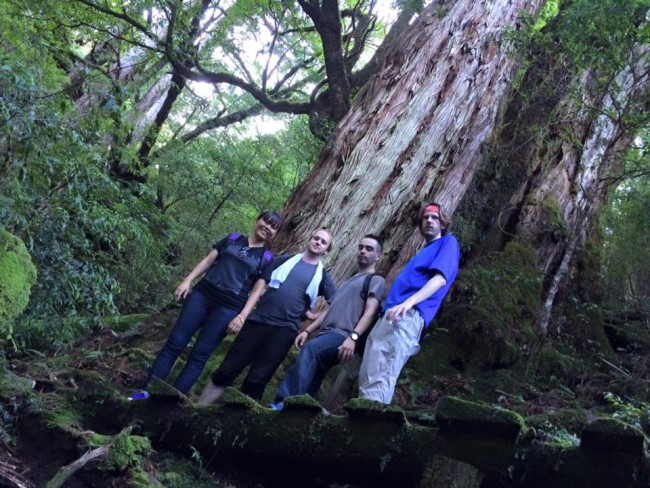
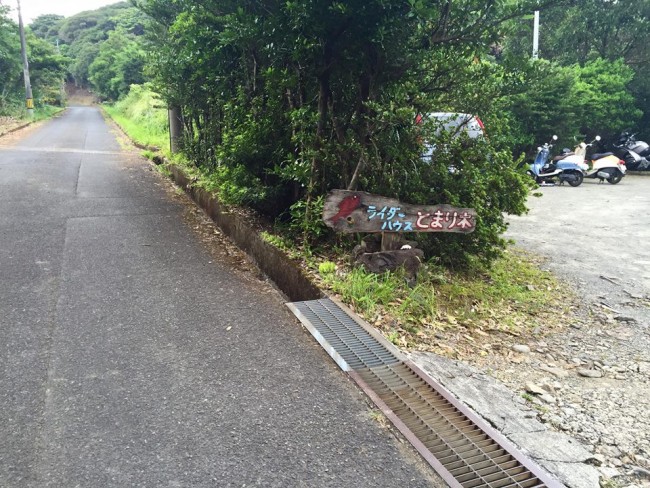
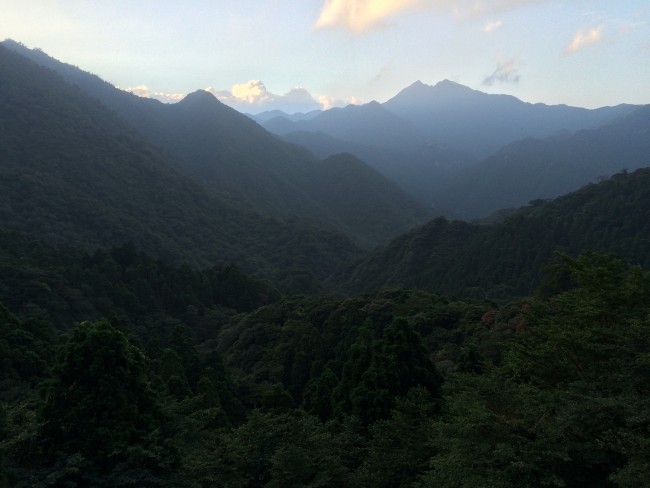
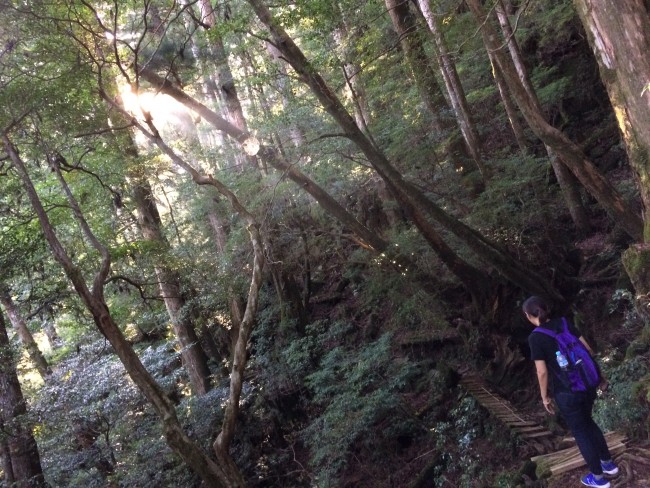
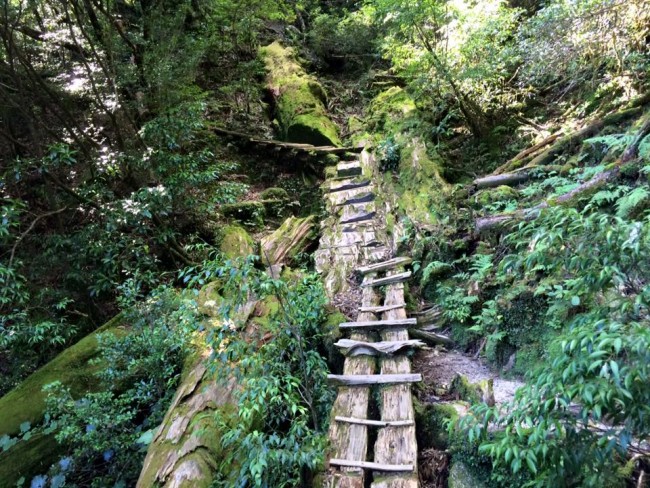
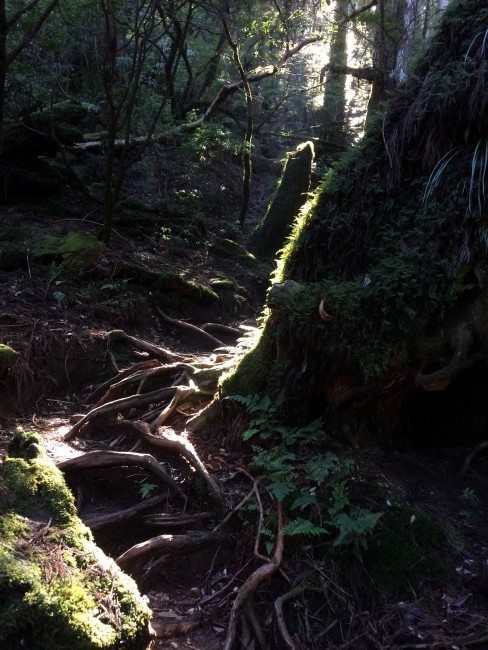
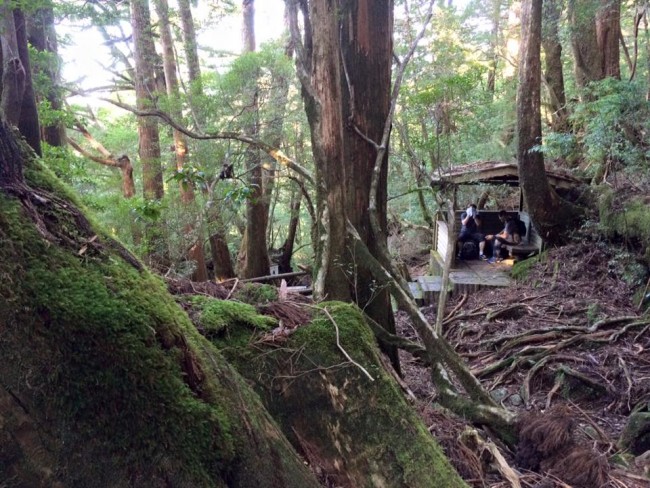
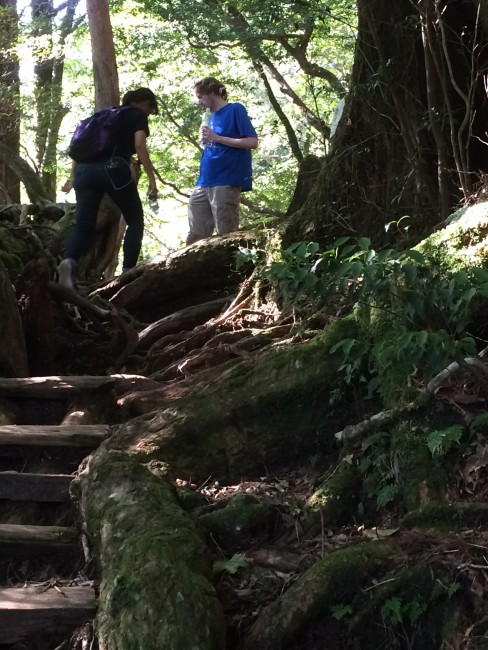
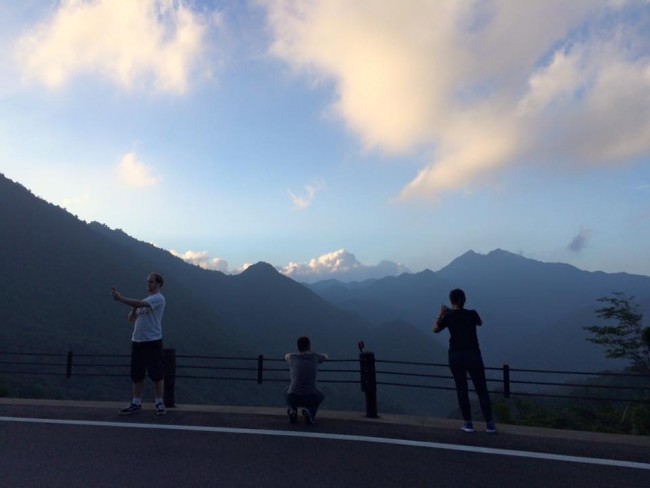
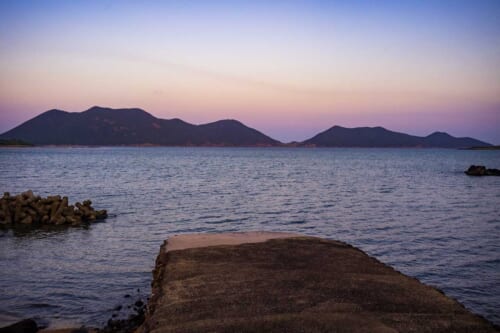
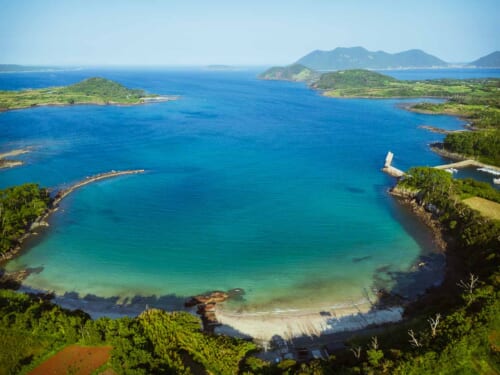
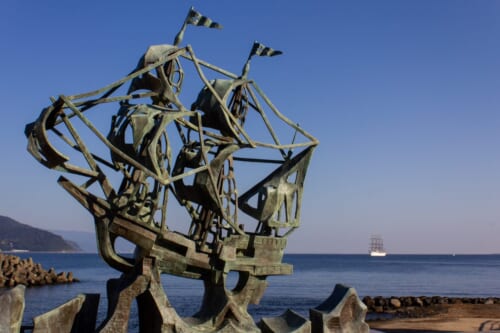
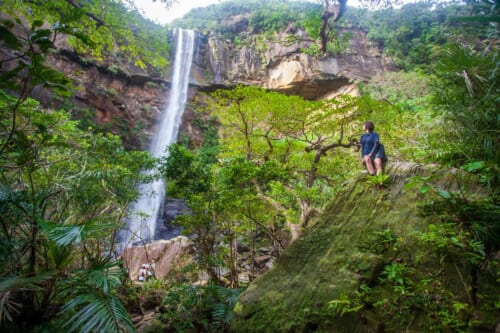
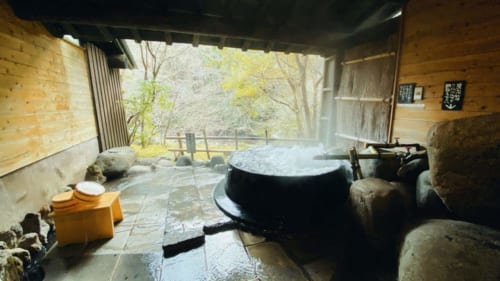
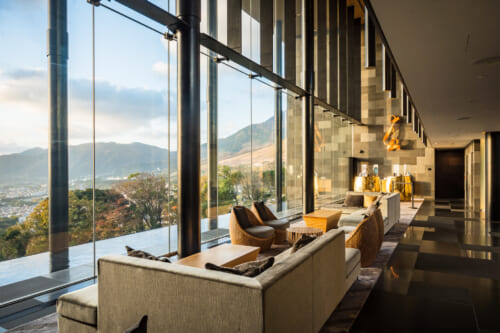
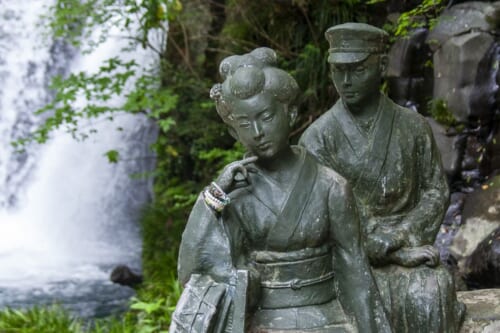
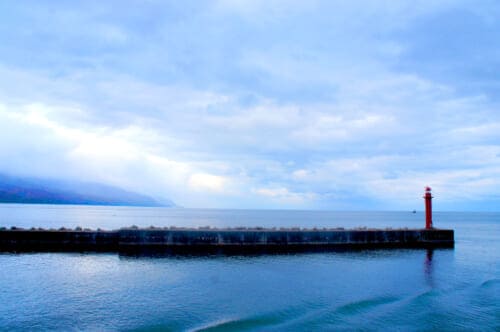
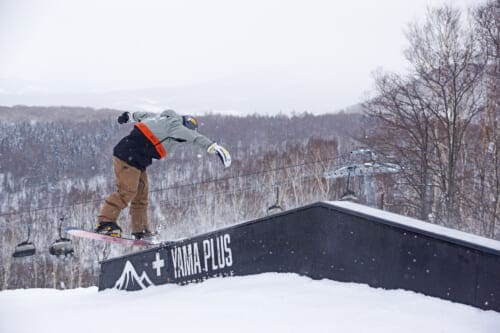
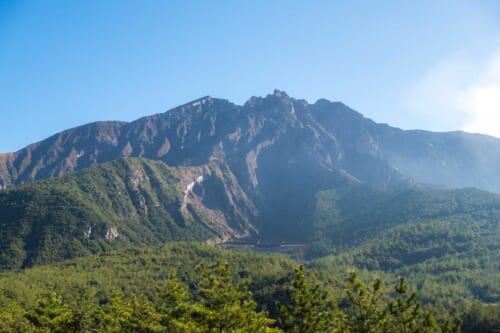
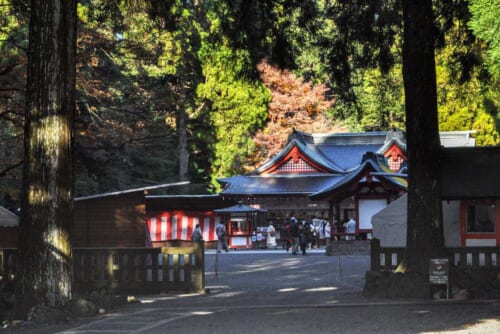


No Comments yet!